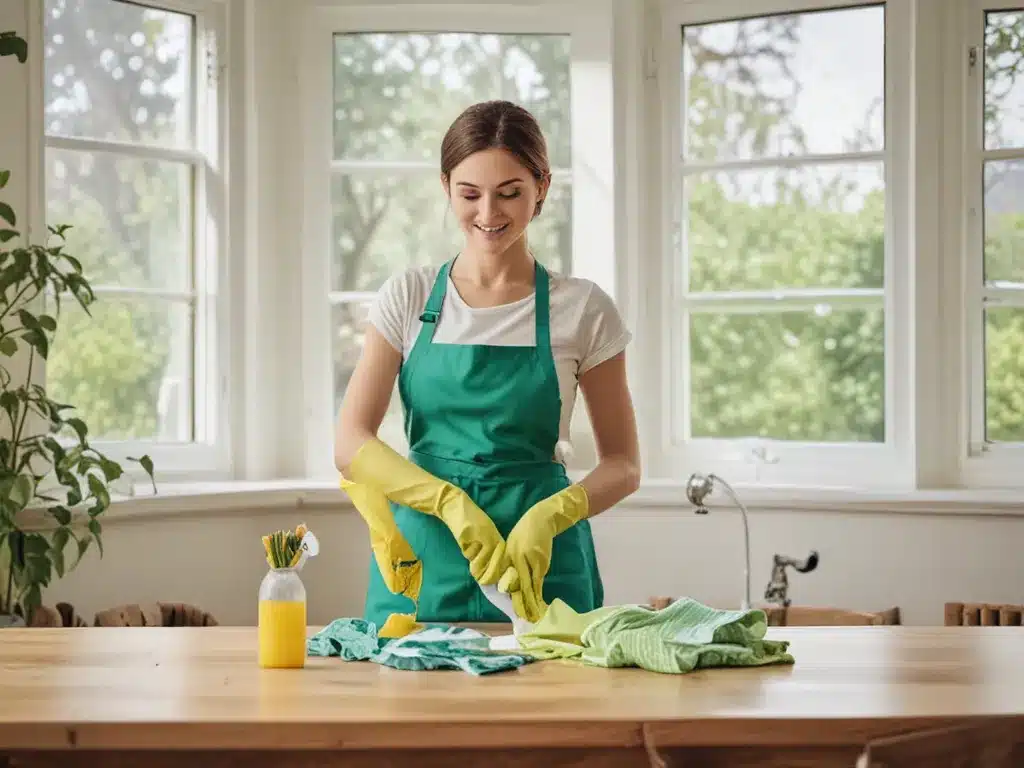As spring arrives, I’m feeling the urge to do some deep cleaning and get rid of clutter. However, I want to avoid exposing myself and the environment to harsh chemicals often found in conventional cleaning products. That’s why I’m committed to green cleaning this spring with more natural, sustainable methods.
Start by Decluttering and Organizing
Before breaking out the cleaning supplies, I take time to declutter and organize each room. Sorting through belongings and donating unused items helps create a tidy foundation to build upon. I designate separate boxes or bins for trash, recycling, donation items, and things to relocate to other rooms.
Taking stock of my belongings also allows me to evaluate if I need new organizational systems or storage containers. For example, rolling utility carts allow me to neatly stow cleaning tools in a small space. Clear plastic bins help me corral odds and ends like craft supplies.
Getting organized first makes cleaning more efficient and effective. I’m not constantly moving things around, and it’s easier to clean surfaces when they’re free of clutter.
Use Eco-Friendly Cleaning Products
Once decluttered, it’s time to clean. But I skip the conventional cleaners full of harsh solvents, fragrances, and chemicals. Instead I turn to natural cleaning solutions that get the job done without harming me or the planet.
Some of my go-to ingredients include:
- Baking soda – Cleans, deodorizes, scours, and polishes.
- White vinegar – Cuts grease, removes grime, disinfects, and deodorizes.
- Liquid castile soap – Lifts dirt while leaving surfaces streak-free.
- Hydrogen peroxide – Disinfects and whitens.
- Essential oils like lemon, lavender, and tea tree oil not only make my homemade cleaners smell amazing, but also add disinfectant and antimicrobial properties.
I combine these ingredients to make all-purpose cleaners, scrubbing solutions, toilet bowl cleaner, and more. The options are endless.
Employ Other Eco-Friendly Tools
In addition to green cleaners, I use other sustainable tools and supplies:
- Microfiber cloths – These tightly woven cloths clean with just water, reducing the need for cleaners. They’re also washable and reusable.
- Steel wool soap pads – These scratch-free pads tackle stuck-on grime with just water. Unlike traditional steel wool, they won’t shed tiny metal strands.
- Beeswax wraps – I use these reusable wax-coated cotton wraps instead of plastic wrap to cover leftovers and produce.
- Reusable paper towels – These absorbent cloths replace wasteful paper towels for cleaning tasks.
Conserve Water and Energy
I also implement water- and energy-saving practices while cleaning:
- Only running full loads in the dishwasher and washing machine
- Letting dishes air dry instead of using the heated dry cycle
- Wiping down surfaces first before mopping floors
- Sweeping instead of hosing down patios and sidewalks
- Doing laundry in cold water to save energy
- Opening windows to air out rooms instead of relying solely on air fresheners
Stay Motivated with Regular Maintenance
The key is establishing regular cleaning habits so messes don’t build up. I make my bed every morning, do dishes after each meal, and set a time once a week to vacuum, mop, and tidy.
Quick daily tidy ups mean I don’t have to set aside large chunks of time for heavy duty cleaning too often. But when I do roll up my sleeves, I can feel good knowing I’m not exposing myself or the environment to toxins.
With some planning, eco-friendly products, and consistent maintenance, spring cleaning sustainably is achievable for any household. What are your best tips for green cleaning? Let me know in the comments!







